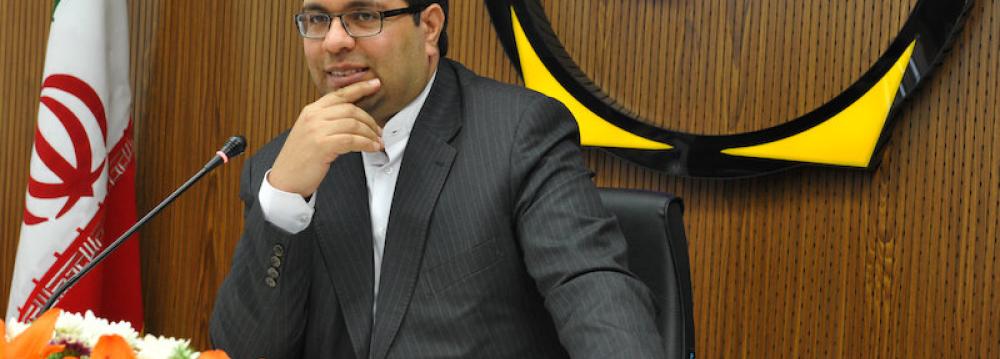Iran Mercantile Exchange is expecting the presence of international financial institutions once sanctions (imposed by the US, EU and UN against Iran over its nuclear program) are lifted, says IME’s newly appointed CEO, Hamed Soltaninejad.
Addressing his first press conference on Saturday, Soltaninejad said a taskforce has been formed to prepare the ground for foreign investors to enter the country.
“Financial institutions are welcome to engage in joint ventures with local partners. Negotiations are also underway to have international rating agencies in Iran,” he said.
Soltaninejad told Financial Tribune that foreign brokerages willing to engage in IME tradings should form joint ventures with authorized Iranian brokerages.
Upon direct offering of their products on IME trading floors or buying local commodities, foreign companies can enjoy various advantages such as tax incentives, according to Soltaninejad.
“IME is also going to develop currency derivatives to help companies minimize risks in the foreign exchange market,” he said.
Launching derivatives to mitigate the underlying risks in trade, raising funds through international markets, diversifying the export trading floor and debuting warehouse securities are currently on IME’s agenda, the IME head added.
Warehouse financing is a form of inventory financing in which loans are offered to manufacturers and processors on the basis of goods or commodities held in trust as collateral for the loans. The goods may be held in public warehouses approved by the lender, or may be held in field warehouses located in the borrower’s facilities but controlled by an independent third party.
Many companies have been drained of capital as a result of the prevailing credit crunch, high interest rates and lack of access to international debt markets. Therefore, instruments such as warehouse financing and collateralized debt obligation can help them raise the required fund and stimulate trade.
Soltaninejad said IME is set to develop trade in post-sanctions era by hosting international players, including forfaiters. “Raising funds via credit transactions and forfaiting will help boost the level of trade in both local and export trading floors,” he said.
In trade finance, forfaiting is a form of financial transaction involving the purchase of receivables from exporters by a forfaiter. The forfaiter takes on all the risks associated with the receivables but earns a margin.
Referring to IME’s plans to launch commodities funds, Soltaninejad said, “Inventories of giant steel and petrochemical companies could serve as collateral for commodities funds, which can help the companies obtain their required cash flow.”
“A number of factors, including recession, currency fluctuations and a sagging global commodities market, have dramatically weighed on IME trade volume and value since March 2014,” he said.
“The industrial and mining sectors recorded 33% decline in trade value since the beginning of the current Iranian year (March 21) compared to the similar period of last year, due mainly to a slump in construction activities which negatively affected the steel industry.”
Despite slow trade in other sectors, the agricultural floor posted 1,900% growth in trade value during the period, though it constitutes only a small share of IME’s trade.
Azadi coin futures’ trading value declined 47% as a result of the lackluster coin market and fluctuations in prices.
“IME plans to make gold coin future contracts more attractive by decreasing the margin and establishing options contracts,” said Soltaninejad.


